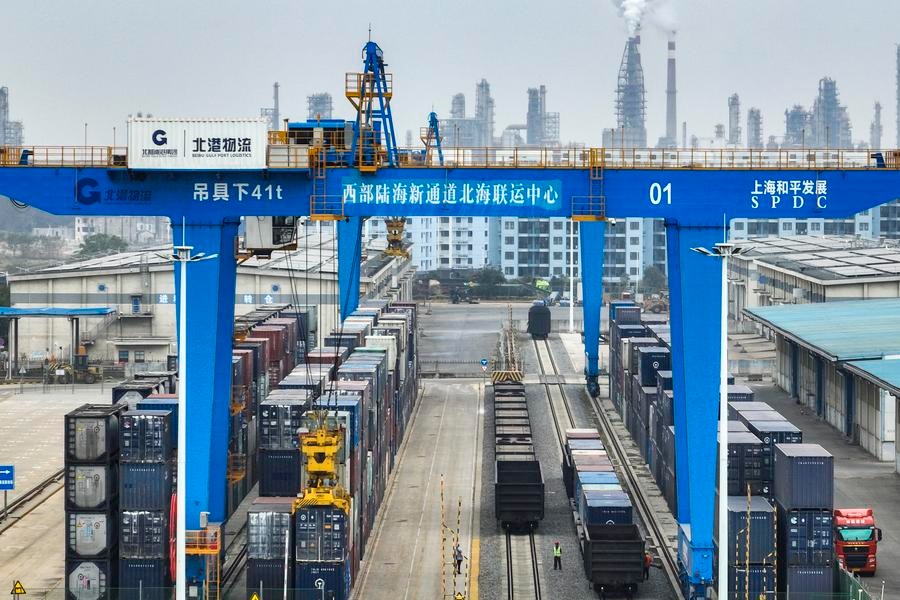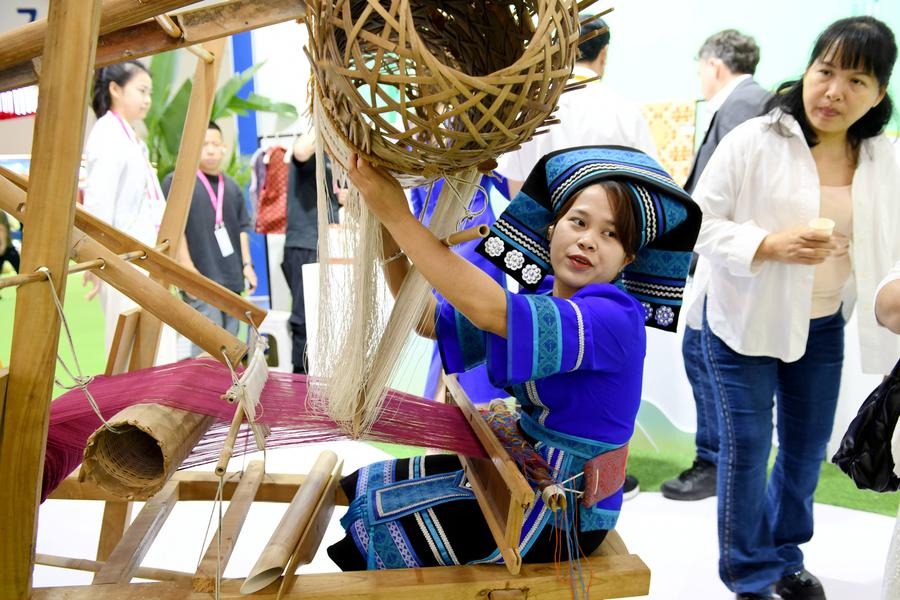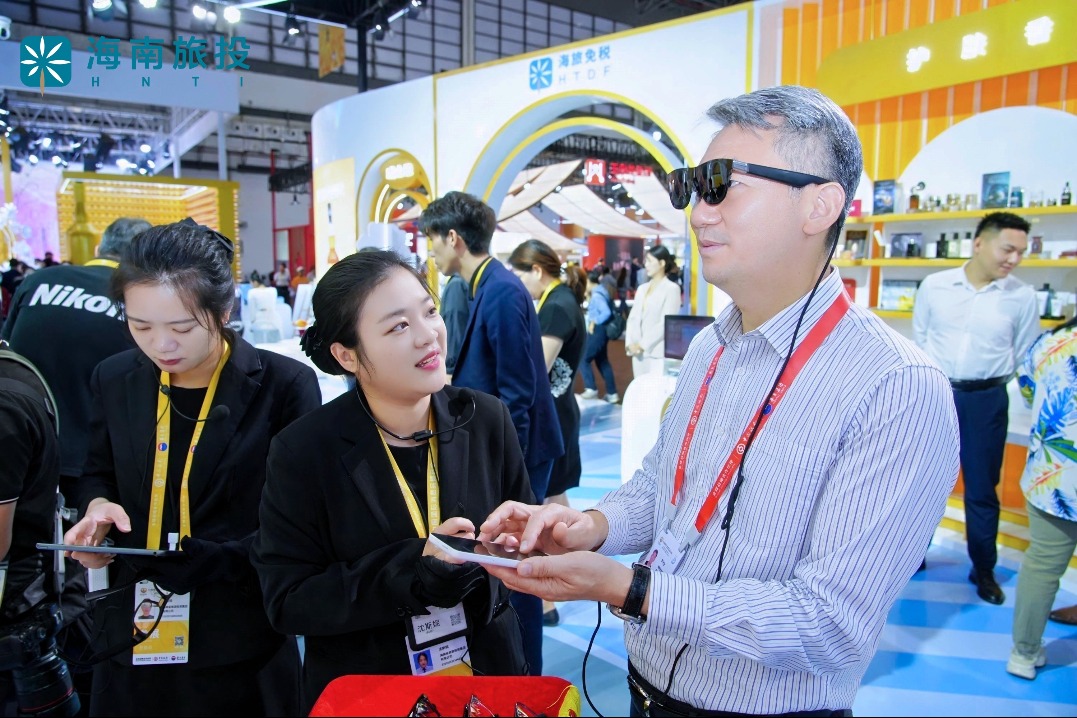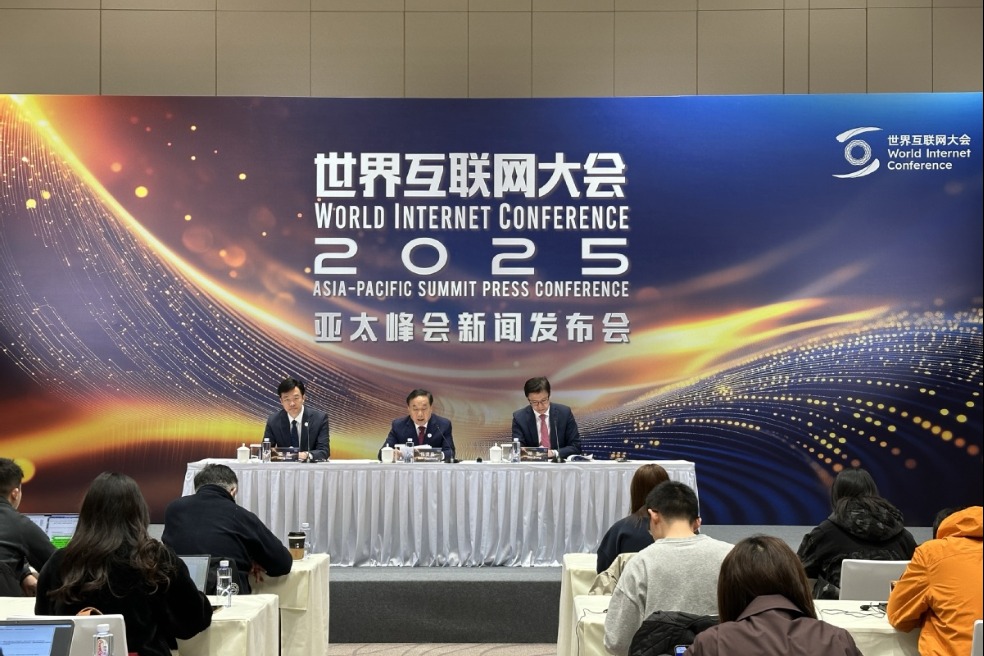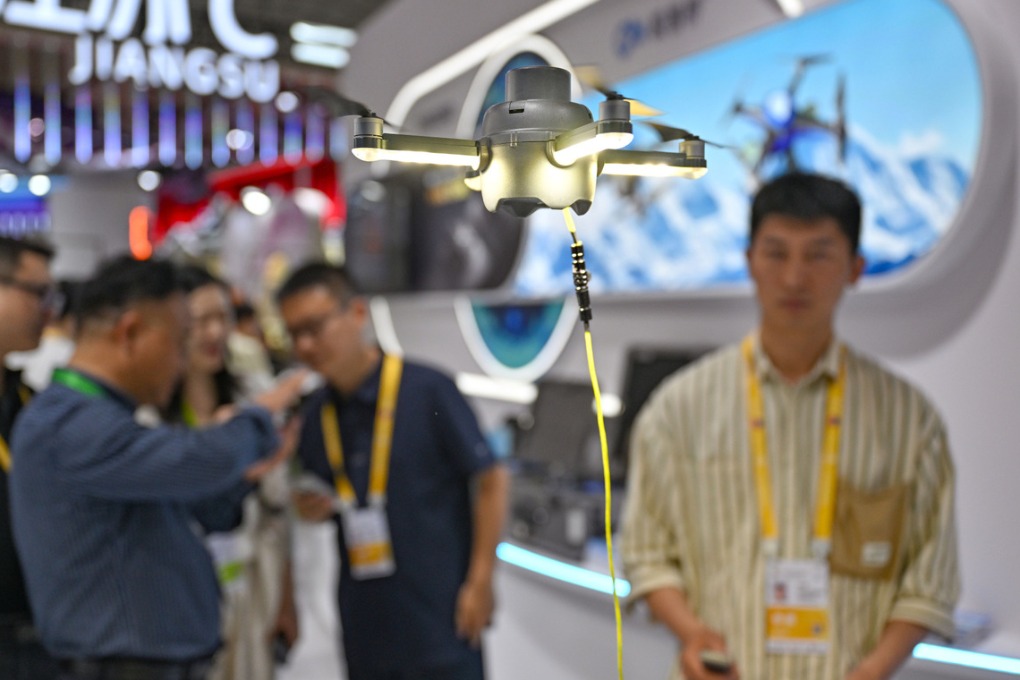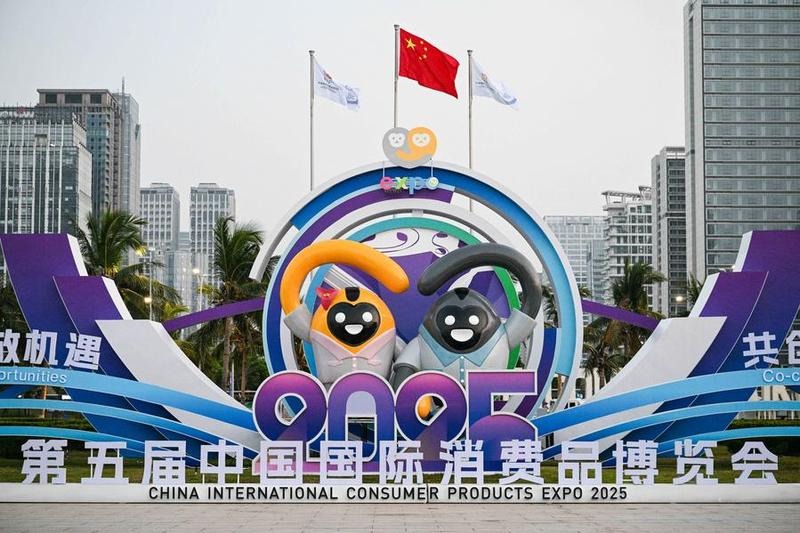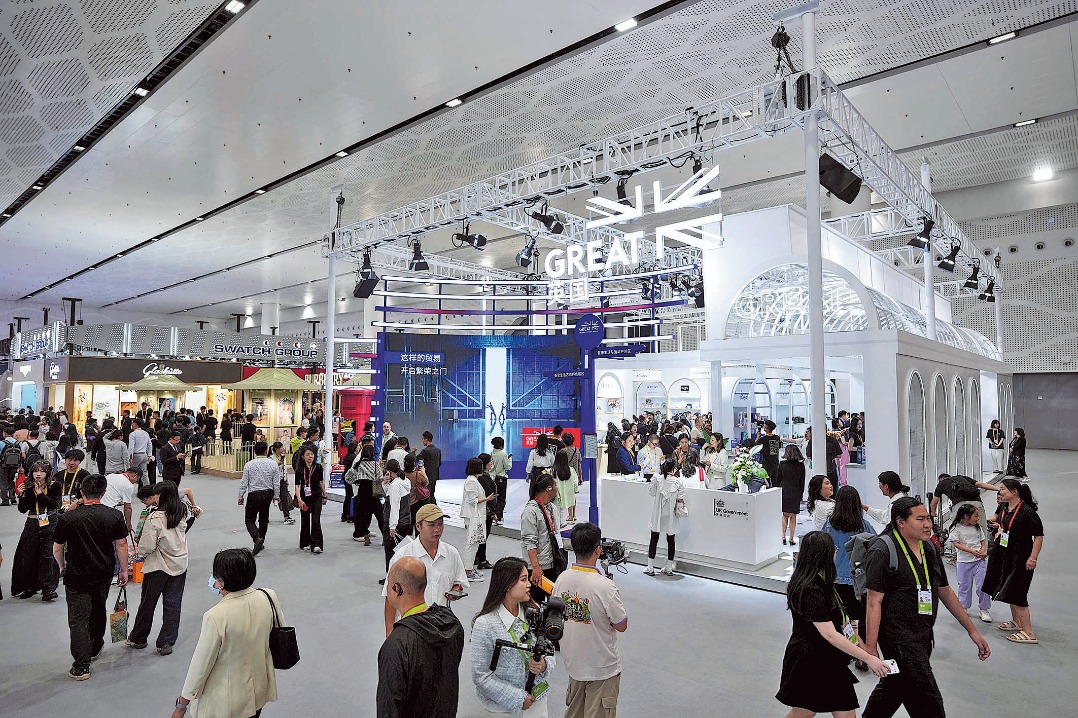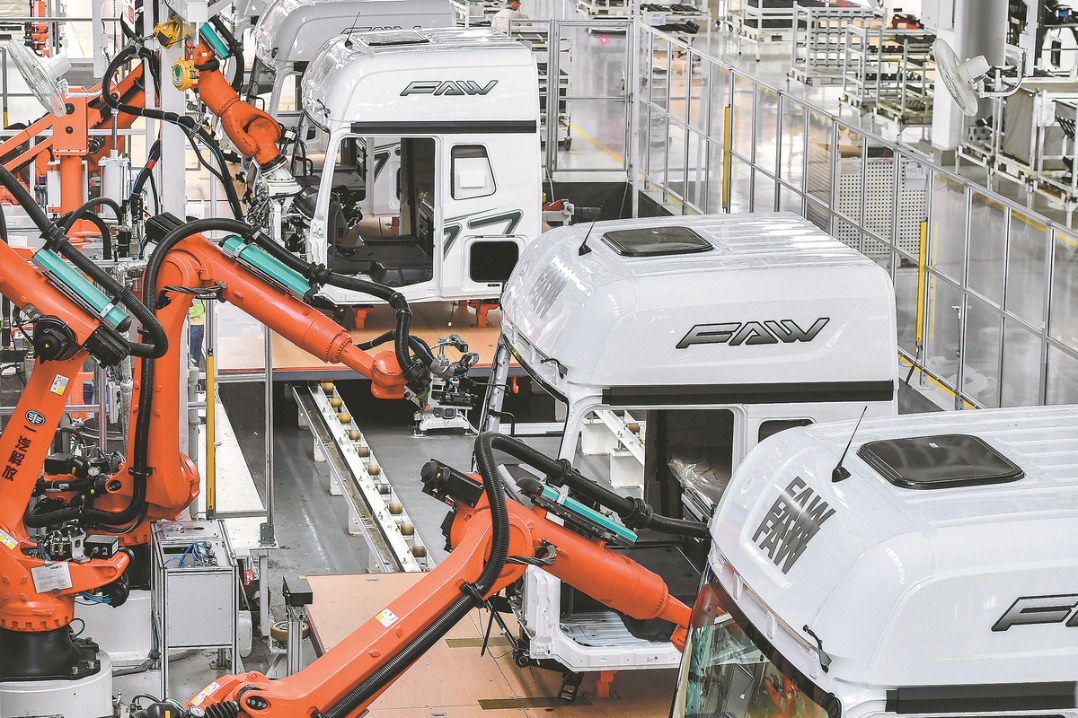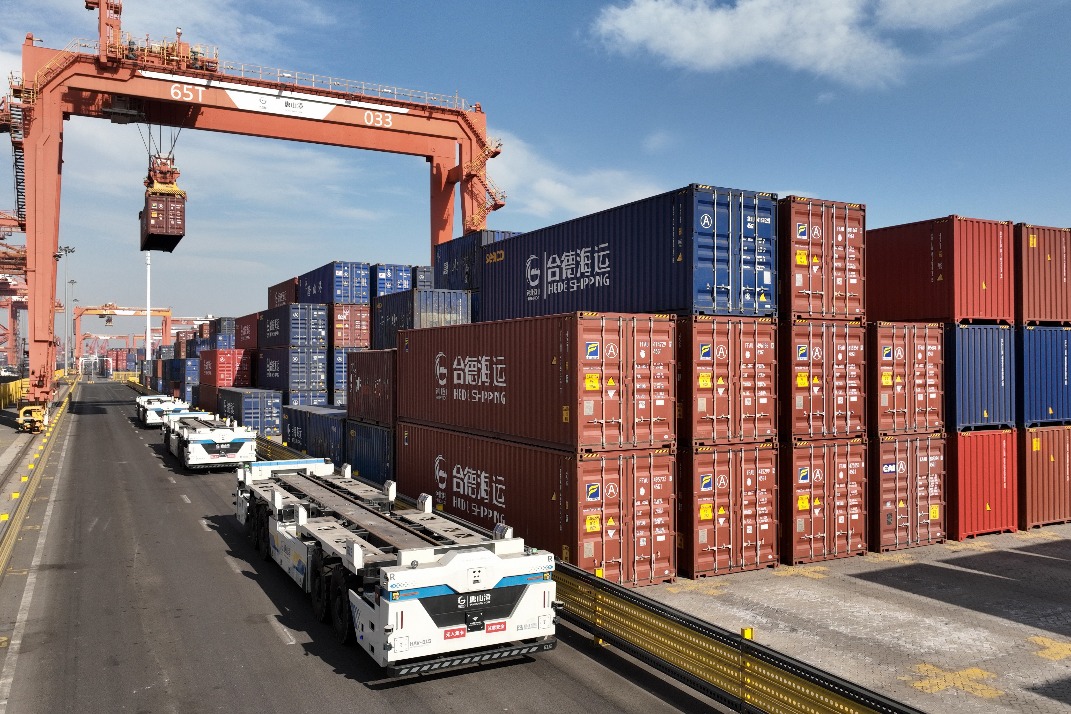Innovation brightens outlook of display panel industry
Thinner, portable technology boosting demand for advanced OLED products


Chinese display panel manufacturers are accelerating steps to expand their presence in cutting-edge organic light-emitting diode (OLED) display sector, which boasts enormous application potential in a wide range of fields such as smartphones, tablets, laptops, vehicle-mounted displays and wearable gadgets.
Compared with traditional liquid crystal displays (LED), OLED is a relatively new technology, part of the latest innovation in displays. It boasts significant improvements in image contrast, brightness, and color spectrum, thus further accelerating advances in the display industry.
Data from market consultancy Sigmaintell Consulting showed that the penetration rate of OLED panels in smartphones across the globe will reach nearly 60 percent in 2025, as major handset manufacturers have adopted OLED panels in their devices.
It said the penetration rate of OLED panels used in tablets is expected to increase from 5.7 percent in 2024 to 18 percent in 2028, while shipments of OLEDs in laptops would surge nearly 92 percent year-on-year in 2024.
Chen Yanshun, chairman of BOE Technology Group Co Ltd, a leading Chinese panel maker, said there is surging demand for OLED panels, which are mainly used in mid-range to high-end smartphones, and the company also plans to expand the application of OLED in tablets, laptops and wearable devices segments.
BOE now owns three flexible active-matrix organic light-emitting diode (AMOLED) production lines in Chengdu and Mianyang in Sichuan province, as well as in Chongqing.
It has announced plans to set up a new AMOLED production line in Chengdu. The products will be mainly high-end touch screens such as those used on mid-sized laptops and tablets. The project is expected to start mass production by the end of 2026.
Industry experts said consumers have a rising demand for laptops and tablets that are thinner and more portable, which drives the rapid development of flexible and foldable display panels.
According to Chen, the company will ramp up efforts to bolster the application of flexible display screens in diversified scenarios, improve technological innovation capacities and strengthen cooperation with partners of industrial chains.
BOE is transitioning from a display supplier to an innovation-oriented internet of things firm, and will propel the integration of artificial intelligence technology with the manufacturing sector to empower semiconductor displays, Chen added.
Data from market research firm Omdia showed that BOE secured the top position nationwide in the shipments of flexible OLED panels in the first half of 2024, and ranked second across the globe.
Li Yaqin, general manager at Sigmaintell, said demand for flexible OLED panels used in foldable smartphones will continue to rise on the back of 5G commercial applications. Panel makers should further improve their yield rate capacities and reduce production costs.
According to CINNO Research, a Chinese flat panel display consultancy, Chinese display manufacturers accounted for 50.7 percent share in the global smartphone OLED display market in the first half of 2024, surpassing South Korea for the first time.
Xu Fengying, executive vice-president and chief operating officer of Visionox Technology Inc, another Chinese display panel supplier, said the shipment of foldable phones equipped with flexible OLED display screens is expected to surpass more than 100 million units by 2028, with a compound annual growth rate reaching 34 percent.
The accumulative shipments of its OLED panels reached 240 million units, while the shipments of its AMOLED panels used in wearable devices took the top spot worldwide in the first half of 2024, according to the company.
Visionox will promote technological innovations for OLED panels, which enjoy broader application potential in vehicle-mounted devices, augmented reality, virtual reality and smart televisions, Xu said.
TCL China Star Optoelectronics Technology Co Ltd is upbeat about the prospects of OLED panels, and will strengthen cooperation with global partners to bolster industrial upgrade.
Zhao Jun, senior vice-president of TCL Technology Group and CEO of TCL CSOT, said the inkjet printing OLED panels, which feature greater brightness, faster response times, wider viewing angles and lower power consumption, have been deemed as the development direction for next-generation display technology.
















